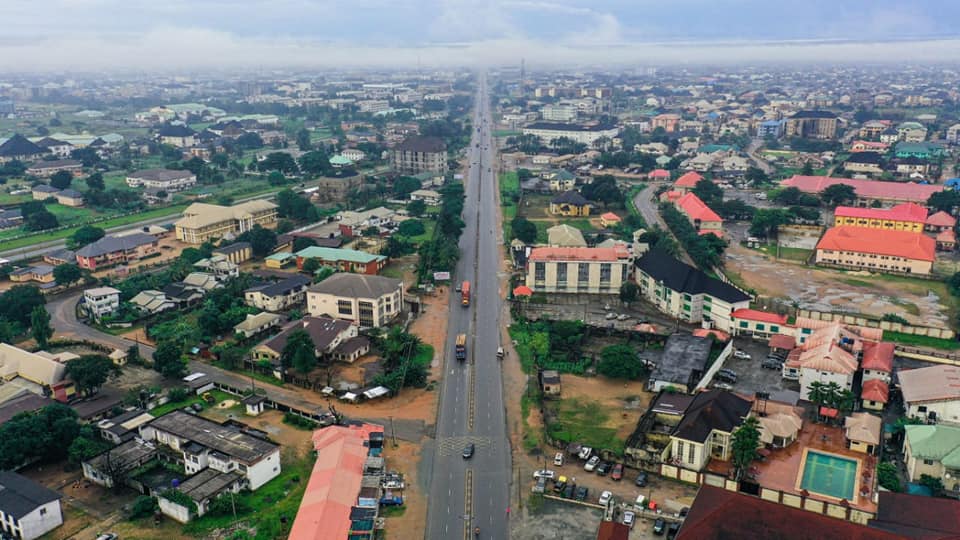These officers, who were of the 3rd battalion of the Nigerian Army had just returned from Tanzania after cracking down on an internal problem in that country. They later became victims or key players in January 15, 1966 coup. Eventually one of them from the Middle Belt, General Yakubu Gowon, came into power in July 1966 and a few months later in 1967 split the country into 12 states.
General Gowon invited Chief Tarka into his cabinet as minister for communication, only to be succeeded by Brigadier General Rufai Murtala Ramat Mohammad (1938-76), but was later forced out of the cabinet as a result of allegations of corruption made by one of his kinsmen, Chief Godwin Daboh Adzuana (1942-2012).
The Tiv Riots and the independence of the Middle Belt played a key role later in the creation of more states in 1967. The calculation then was that the creation of states would free the Middle Belt from the conquest agenda of the Fulanis. That calculation has proved wrong.
My friendship with Chief Joseph Sarwuan Tarka was a friendship that I valued and still cherish till date. He was a charismatic and true leader of the Tiv people. I was introduced to him by Alhaji Uba Ahmed sometimes in 1977, after which our friendship grew and lasted till, he died in a London hospital on March 30, 1980. Friendship between Journalists and Politicians is inevitable.
I was at the hospital with Senator Uba Ahmed when he died and we accompanied his corpse back to Nigeria in a Nigerian Air Force Hercules plane, courtesy of President Shehu Shagari. I was also at his funeral service in his hometown. Between 1977 till his death, his general complaint was about the plight of his Tiv people. He kept referring to the Tiv Riots and how his people were massacred during the military campaigns that followed it.
Chief Tarka was a persuasive talker not used to exaggeration. At his Ikoyi residence, near the present Ikoyi marriage registry, his house was always full of people. To ensure privacy, he would take me upstairs, where he would narrate tragic stories of the Tiv Riots. He explained to me then that the Tivs were not the aggressors; “How can we be on our land”, he pointed out several times. At the age of 24, he had become a leader, and he died at the age of 48.
The mystery about his political life was that in 1978, he aligned with the National Party of Nigeria (NPN), a party composed largely of those he fought against in the last 20 years of his life. One would have expected that he would align with the Unity Party of Nigeria led by Chief Obafemi Awolowo, who opened the door of opportunities to many tribes’ nationalities in the present Middle Belt. Or that he would align with the Nigerian People’s Party of Chief Solomon Daushep Lar, Chief Paul Wantaregh Unongo, George Baba Hoomkwap, Garba Matta, John Wash Pam, Abubakar Ibrahim, Muhammadu Musa and others.
In the 1979 Benue East Senatorial election, after joining the NPN, he scored 122,622, as against Mr. J.V. Vembeh of the NPP, who scored 15,180 and J.V. Yaji of the UPN who had 5,747. His son, Simeon was also elected on the platform of NPN, Gboko Constituency into the Federal House of Representatives. With his influence, all the NPN candidates in Benue State, including Chief Andrew Abogede, Mr Suemo Chia, Chief Ameh Ebute and Colonel Adah Ahmadu Ali, all won their senatorial elections.
When he joined the NPN, he was denied the presidential nomination of the party in 1978, the Senate presidency in 1979 and the Senate leadership also in 1979. He was only rewarded with the chairmanship of Senate Committee on Finance and Appropriation, before being flown to London in 1980 for a medical checkup, during which he died.
Unlike now, that an average member of the National Assembly is an instant millionaire because of easy access to public funds, deals, constituency projects and budgets padding, the members of the National Assembly between 1979 and 1983 only lived on salaries and travel allowances.
When Chief Tarka was appointed the Chairman of the finance committee, he did not understand his schedule. Only Senator Uba Ahmed persuaded him from resigning from that committee.
At the Senate, although an NPN Senator, he was more at home in company of notable UPN, NPP and GNPP senators, including Senators Abraham Aderibigbe Adesanya, Mahmud Waziri, Patrick Emeka Echeruo, Kayode Ogunleye, Idrissa Kadi, Buka Sanda, Joseph Ansa, Kunle Oyero, Jonathan Olawole Akinremi Odebiyi, Cornelius Adebayo, Stephen Adebanji Akintoye and, of course, his friend, Senator Jaja Anucha Wachukwu (Aba). He enjoyed his Senate days until his health deteriorated and had to leave for London with his friend, Senator Uba Ahmed (Bauchi North East).
On December 8, 1996, General Sanni Abacha created Tarka Local Government out of Gboko Local Government in honour of the memory of Chief Joseph Tarka. Today, the council is one of the 23 local governments in Benue State, and is situated north of Gboko Local Government Area, in the North-East wing of Benue State. The local council shares boundaries with Guma, Gwer, Buruku and Gboko Local Governments.
Benue and Plateau states have produced to date, the highest number of military officers, yet, their states have been terrorised by a tiny army of Fulani herdsmen for the past sixty years also. To the ordinary person, the thinking is that, these officers while serving or retired, would not allow their land to be invaded by the Fulani herdsmen. Apart from General Yakubu Gowon GCFR, who is from Plateau state, there are other outstanding military officers that I have in mind.
Colonel Joseph Agbo Akaahan(April 1937 – May 1968) was Chief of Army Staff from May 1967 until May 1968, when he was killed in a helicopter crash during the Nigerian Civil War. Lieutenant-General Victor Samuel Leonard Malu (15 January 1947 – 9 October 2017) who was Chief of Army Staff (COAS) from 1999 to 2001 and Force Commander of the ECOMOG peace-keeping force in Liberia from 1996 to 1998. He was from Benue state. I don’t want to mention names of other military officers, both dead or alive who are from Benue or Plateau state.
This present generation should not pass the issue of herdsmen to the coming generation in Benue and Plateau states. Too many lives have been lost. LinkedIn made several suggestions on resolving community conflict, which I will like to make reference to.
The first step to resolving a community conflict is to understand its nature, causes, and effects. You need to identify who are the parties involved, what are their perspectives, needs, and emotions, and how the conflict impacts them and the community. Such tools such as conflict mapping, stakeholder analysis, or surveys can be used to gather information and data.
Personal biases, assumptions, and feelings about the conflict must be aware of. This comprehensive understanding sets the foundation for effective conflict resolution, fostering empathy and informed decision-making to address the underlying issues and promote harmony.
Conflict is common in every setting and the foremost step is identifying the parties involved and giving every person involved a fair hearing. It will be a grave mistake to listen to just one side of the issue and come to a conclusion.
The second step to resolving a community conflict is to communicate effectively with the parties involved. Trust, respect, and rapport must be established with the community involved, listen actively and empathetically to their views and concerns. Opinions and feelings must be clearly, respectfully, and constructively expressed, and avoid blaming, criticising, or judging others.
Effective communication is crucial during conflict resolution. You should be able to listen well and pay attention to details. Allow parties to establish their grievances, so you can address the issue. Remember emotions are high and try to show empathy during the process.
Showing empathy will help you to build trust and rapport with the people. Do not take sides, try to stay objective so you can give constructive criticism during the process.
To be continued tomorrow.
Teniola, a former director at the Presidency, wrote from Lagos.






